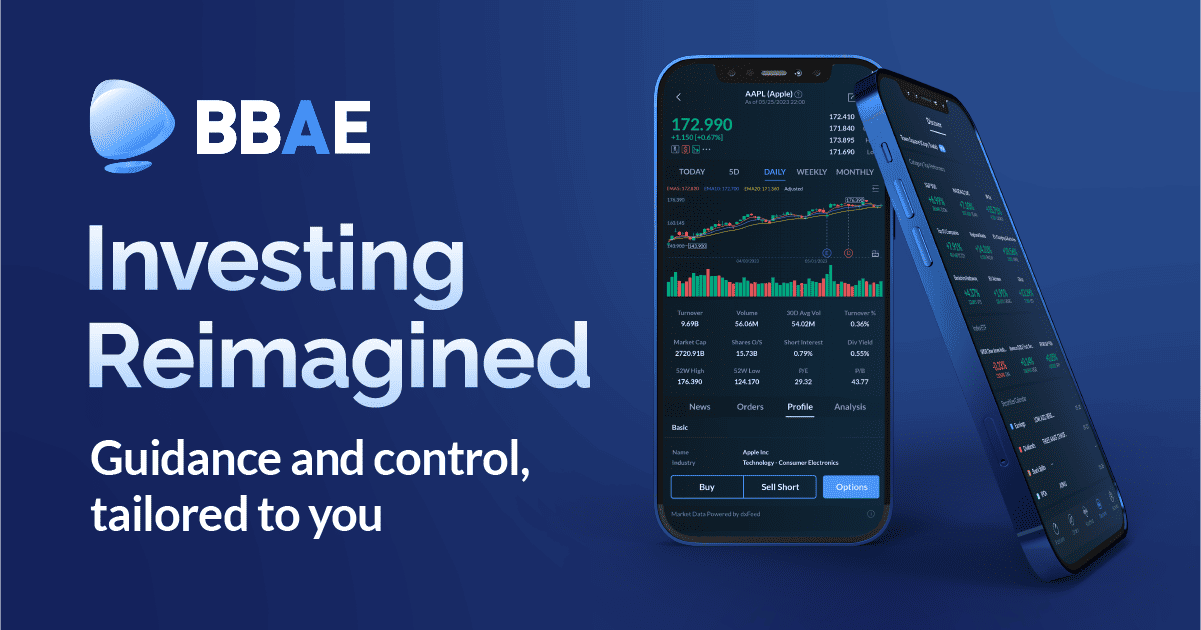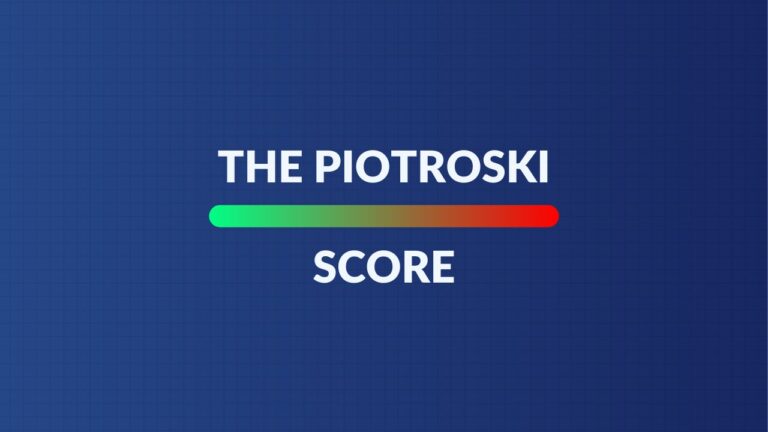Latin American Earnings Season – Mercado Libre & NuBank – February 24, 2024
Mercado Libre (MELI)

Demand:
Mercado Libre beat consensus revenue estimates by 3.1%. Foreign exchange neutral (FXN) revenue growth was 83% Y/Y and constant currency revenue was its fastest in over a year. FXN gross merchandise value (GMV) rose by 79% Y/Y.


Source: Brad Freeman – SEC Filings, Company Presentations, and Company Press Releases
Profitability:
The firm sharply missed GAAP EBIT expectations by about 60% and GAAP net income expectations by about 50%. More context is needed here. The GAAP “misses” include $351 million in charges related to legal proceedings and tax disputes. It thinks it will lose the related hearings, so the company incurred the provision charges. Despite this being tax related, the costs were incurred in the cost of revenue and OpEx buckets. That is why it impacted GAAP EBIT so heavily and not just GAAP net income (because GAAP net income is after tax and GAAP EBIT is pre-tax).
Excluding this one time hit, EBIT missed by 12.1% and rose by 78% Y/Y for a 13.4% margin. Net income of $165 million would have been $383 million for a 12.1% margin. That represents GAAP EPS of $7.56 vs. expectations of $6.96. Excluding the one-time hits, margin expansion was despite higher rates of free shipping (discussed below), capacity expansion investments, more first party selling (lower margin but strategic) and postponed price hikes in Brazil.

GPM = Gross Profit Margin

Q4-2023 GAAP NI margin excludes aforementioned special charges in this chart
Source: Brad Freeman – SEC Filings, Company Presentations, and Company Press Releases
Balance Sheet:
- $6 billion in cash & equivalents.
- $5.3 billion in debt.
- Share count fell slightly Y/Y.
Valuation:
MELI trades for 57x expected 2024 earnings and 34x expected 2024 FCF. EPS is expected to grow by 46% Y/Y and FCF is expected to shrink by 20% Y/Y.
Call & Release Highlights:
Commerce for Consumers:
MELI delivered its fastest FXN commerce revenue growth rate in over a year as it continues to rapidly take share in all markets. Unique buyer growth rose to its fastest clip since the pandemic; items sold growth accelerated to 29% in Q4 for the fastest rate of growth since 2021. I guess you might say it was a good quarter… and you’d be right. Acceleration across key performance indicators and key geographies was enjoyed across the board.
To leadership, this illustrates their strategy working and the several years of investments leading to improving user value. It’s the continued formation of a deepening competitive moat. Most of those improvements on the customer side are small & subtle in nature, but aggregate to form something truly unique to the region. As part of its Meli+ loyalty program, for example, it recently added a new option to schedule shipments on a set day each week for free fulfillment. This led to free shipping proportions setting new records in Brazil and Mexico as traction for the program and perk builds. As an aside, this led to the small Q/Q decline in take rate, which is a trade-off that leadership is happy to make. The effect of these tweaks working can be seen in orders per unique buyer, which rose from 7 to 7.6 Y/Y.
Interestingly, MELI is greatly leaning into 1st party GMV. It wants to vertically integrate more of its marketplace and more of its supply chain. It thinks this will allow it to offer better service and unleash more flexibility to enhance consumer value as it rounds out a superapp. Improved pricing, selection and inventory picking algorithms are resolving previous internal bottlenecks that prevented 1st party proliferation. And? 1st party GMV rose by 85% FXN Y/Y. As part of this evolution, Meli is finding growing success within consumer electronics – the largest e-commerce category in Latin America. The 1st party algorithm investments and better supplier relationships led to 140% FXN growth for the category in Brazil this quarter. That’s despite consumer electronics growth in that market for Q4 being negative overall.
Commerce for Merchants:
MELI continues to roll out 3rd party seller tools as it pursues both 1st and 3rd party GMV growth. It launched a new affiliate program and short-form video clips to juice seller traffic and conversion. Both debuts are working as expected. Furthermore, improved delivery timeline accuracy is boosting 3rd party merchant conversion further. That means more revenue and profit for MELI. Win, win.
Meli added 50,000 new advertisers to its network in 2023. Most are self-service, but it recently debuted new tech to manage more of the targeting and reporting for larger buyers. Advertising revenue was above 70% FXN for the 7th straight quarter.
Logistics/Fulfillment:
MELI is now delivering 52% of orders same or next day vs. 54% Q/Q & 51% Y/Y. The sequential decline was due to consumers choosing slower, cheaper options and more deliveries to regions further away from its fulfillment centers.
It continues to build out new capacity in Brazil and Mexico. In Brazil, this led to its internally serviced fulfillment rate rising from almost 40% to almost 50% Y/Y. Mexico capacity additions helped ease fulfillment bottlenecks that it had been dealing with there.
Total Payment Volume (TPV):
MELI splits TPV into three buckets. Acquiring TPV is payments processed for merchants; Digital Account TPV is payment volume within MELI’s mobile wallets (bill pay, peer-to-peer etc.); Off-platform TPV is volume from other merchant sites utilizing Mercado Pago as the checkout gateway. There is overlap between off-platform and acquiring TPV. Acquiring TPV rose 104% Y/Y FXN while digital account TPV rose 259% Y/Y FXN and off-platform TPV accelerated across every single market.
- MELI thinks it’s one of the largest acquirers in LatAm today.
- QR processing is thriving in Argentina; point of sale (POS) processing is thriving in Mexico.
- In Brazil, it’s seeing greenshoots from its previous reorganization of its POS go-to-market. Investment payback periods are shrinking, which should let it get aggressive with nurturing Brazilian POS volume.
Financial Services:
MercadoLibre’s interest earning consumer accounts doubled Y/Y to reach 30 million. Growth was rapid in all regions. It sees this as a wonderful top-of-funnel for future cross-selling. MELi can offer a compelling savings yield to delight customers, get them into the ecosystem and then monetize with all of the other products the firm provides. It’s willing to use this high-yield savings account as a lower margin lead generator to boost highly engaged new accounts. This is clearly playing out in every market as it enjoys a TPV uplift that directly correlates with account growth. It just launched this high yield savings product in Chile. All in all, MELI has 53.1 million fintech active users vs. 43.7 million Y/Y and 30 million wallet payers vs. 23.3 million Y/Y.
Credit/Lending:
As described last quarter, the company entered 2023 “cautiously optimistic that problems with Brazilian credit when first launching the card in 2021” were resolved. It wrapped up 2023 with “hard data to support that optimism.” It has extensive customer data profiles to know its base better than others can. It’s beginning to prove that it has the tech to effectively flex this advantage. Despite the acceptance rate boost following fine tuning its underwriting, delinquencies are stable and its newest cohorts are performing very well. In Mexico, where it debuted the card this year, credit performance is good early on. Overall TPV growth for this product bucket accelerated throughout the year as it got more aggressive in Brazil and enjoyed the Mexico launch. Its overall credit portfolio rose from $2.8 billion to $3.8 billion Y/Y while credit card users rose 95% Y/Y to 20 million. It continues to underwrite better than others and continues to be among the low cost providers as well. This is how its net interest margin after losses sits at a lofty 39.8% vs. 39.0% Y/Y.
“We are confident that our proprietary data will be a major competitive advantage as we build this product over the coming years… 2023 is a testament to our ecosystemic competitive advantage in distribution and underwriting, our cautious risk management and geographic diversification.” – Shareholder letter
Key credit metric trends:
- 15-90 day non-performing loan (NPL) rate was 8.2% vs. 7.6% Q/Q & 8.4% Y/Y. Lower is better.
- 90+ day NPL rate was 18.7% vs. 20.3% Q/Q & 29.6% Y/Y. The Y/Y fall was helped by shedding a large chunk of 270+ day non-performing loans.
- Provision coverage (percent allowance for doubtful accounts / NPL rate) for 15+ day NPL loans rose from 102% to 107% Y/Y and from 131% to 153% for 90+ day NPL loans (helped by shedding 270+ day delinquent loans).
- $3.63 billion in credit card receivables vs. $2.95 billion Y/Y.
- $2.63 billion in loans receivable vs. $1.70 billion Y/Y.
Argentina:
Argentina has been plagued by hyper-inflation in recent quarters. That is greatly impacting economic activity and life there for its citizens. Under new leadership, the government has turned its deep, deep deficit into a surplus. It’s slashing regulation and promoting pro-business agendas. Regardless of what you think of this politically, it should be a strong positive for MELI’s growth and profitability in that country looking ahead.
Take:
This was a solid quarter. The EBIT miss isn’t ideal, but this firm doesn’t offer quarterly guidance and exists in markets that American analysts like myself don’t understand nearly as well as the U.S. I can’t call the misses (ex-charges) irrelevant, but I can call continued rapid compounding and margin expansion much more important. It keeps taking more market share; it keeps successfully launching products; it keeps making more money; it keeps pleasantly surprising me in its ability to effectively underwrite credit. It just keeps executing. I see what the stock price did after the report. If I were a shareholder, I’d be a lot more excited by the results than disappointed by the share price reaction.
Nu Holdings

Nu is a digital financial services giant in Brazil, with operations quickly expanding into Mexico and Colombia.
Demand:
- NU beat revenue estimates by 2.5%.
- Its 94.2% 2-year revenue CAGR compares to 111% Q/Q & 136% 2 quarters ago.
- Revenue rose by 57% Y/Y FXN.
- Interest income & financial instrument revenue rose 69% Y/Y FXN to $1.95 billion.
- Fee & commission income rose 21% Y/Y FXN to $454 million.
- Revenue per active customer rose 23% Y/Y FXN to reach $10.60.


Source: Brad Freeman – SEC Filings, Company Presentations, and Company Press Releases
Profitability:
- Beat 43.9% GAAP GPM estimates by 360 bps.
- Missed net income estimates by 1.5%.


Source: Brad Freeman – SEC Filings, Company Presentations, and Company Press Releases
Balance Sheet:
- $6 billion in cash & equivalents.
- $1.14 billion in debt.
- Diluted shares rose 3.9% Y/Y; basic shares rose 1.3% Y/Y.
Valuation:
NU trades for 24x expected 2024 EPS. EPS is expected to grow by 70% Y/Y.
Call & Release Highlights:
Growing like a weed:
NU now has 78 million monthly active customers, which rose 27% Y/Y. Importantly, rapid customer growth is coinciding with rising engagement rates, further feeding the growth engine. 83.1% of total customers are active vs. 81.9% Y/Y. Revenue per active user overall rose to $10.60 vs. $8.20 Y/Y. 61% of these active users also call NuBank their primary banking account (PBA), which directly props up customer lifetime value vs. non-PBA customers. Cost to serve borrowers remains stable and near industry lows of $0.90. That’s a key piece of NuBank’s competitive edge – merging more product cross-selling and a larger network effect with being the low cost provider of commoditized financial services.
Newer cohorts are consistently utilizing more & more products and are contributing more & more revenue. Specifically by product, credit card customers rose 21% Y/Y to nearly 41 million; investment customers rose 103% Y/Y to 15 million; NuAccounts (bank accounts) rose 31% Y/Y to nearly 69 million; unsecured personal lending customers rose 40% Y/Y to cross 7 million.
93.5% of its customers are Brazilian, where it calls 53% of that entire population its customer base vs. 51% Q/Q. It took the firm just 9 years to get there. In Mexico, it’s already adding customers at a 1 million per quarterly pace (+24% sequentially). It’s only been in that market for 3 years, yet already has 5.2 million customers.
Credit Trends & Health:
NU continues to shift its credit receivables portfolio to interest earning assets. Its interest earning portfolio (IEP) rose by 91% Y/Y FXN vs. 49% FXN growth for the overall receivables base. That outpacing growth led to IEP reaching 23% of the total asset base vs. 12% Y/Y. This is facilitating an explosion in net interest income, with “ample room for more balance sheet optimization ahead.” That optimization will directly support growth rates until it reaches capital ratio limits. But that likely won’t happen any time soon. NuBank’s Capital Adequacy Ratios (CARs) are about 2x the legal minimum. This doesn’t even consider that NuBank is owned by Nu Holdings, which has another $2.4 billion in excess cash to allocate if needed. There’s no balance sheet bottleneck here. Its loan-to-deposit ratio improved from 35% to 34% Q/Q as it accelerated deposit growth to 38% Y/Y FX.
Overall credit growth was strong with the portfolio rising to $18.2 billion vs. $11.3 billion Y/Y. This was powered by credit card and personal loan expansion across all markets. Notably in Brazil, increasing PIX adoption and traffic are creating a nice demand surge. PIX is the country’s real time payment system, which is used by 35% of Nu’s active Brazilian credit card customers. This accelerates velocity of money, modernizes the Brazilian monetary system and should be a tailwind for NU.
Notably, NuBank has been “expanding the risk profile for newer cohorts” as it becomes more confident in its underwriting models. This led to credit allowance expense doubling Y/Y, which was in line with expectations and is a concession the team is willing to make. Overall, metrics are still in great shape:
- Credit loss allowance expense as a percent of the portfolio fell to 3.3% vs. 4.1% Q/Q & 3.7% Y/Y.
- 15-90 day NPL rate of 4.1% vs. 4.2% Q/Q & 3.7% Y/Y.
- 90+ day NPL rate of 6.1% vs. 6.1% Q/Q & 5.2% Y/Y.
Brazilian Regulatory Notes:
NU increased discounting intensity for debt repayment negotiations under Brazil’s sponsored program (called Desenrola). This, paired with more collection initiatives stemming from the regulation, was the source of NIM falling Q/Q. Without this hit, NIM was 19.2%. Importantly, risk-adjusted NIM, which accounts for this item, rose Q/Q from 9.0% to 10.2%.
Brazil also capped interchange rates on prepaid cards in April 2023. This was a headwind for its fee & commission revenue bucket.
Costs & Margins:
Nu’s cost of financial and transaction services fell from 60% of revenue to 52% of revenue Y/Y. It continues to find ample fixed cost leverage as revenues rapidly compound. OpEx overall rose by 24% Y/Y FXN (partially via the new debt collection program in Brazil) and fell from 31% of revenue to 24% Y/Y for the same reason.
As briefly alluded to, its cost to operate is becoming a real moat. Its customer acquisition cost of $7 and quarterly cost to serve of $0.90 pair very nicely with quarterly revenue per user of $10.60. This means its growth spend is basically immediately profitable. It also has an 85% lower cost to serve vs. incumbents and its cost of risk is 15% lower than average in Brazil. It’s easy to see these edges being emulated in Mexico and Colombia as it scales in those markets. It’s hard to differentiate in financial services outside of a higher savings yield or better product interfaces; this is how to durably differentiate. The margin explosion being seen is the result of this promising development.
Take:
If a company posting these results was domiciled in the U.S., it would be a no-brainer part of the portfolio. I’ve been very impressed by Nu’s results since I started following along. This quarter was more of the same and forces me to consider the investment case here. NU is at the top of my watchlist and I plan to spend the next few weeks researching Latin American economics. I need to learn more about that region before I’m comfortable enough to own anything there. Risks to this bull case are a lot different than for a CrowdStrike or a Disney. There are foreign exchange, political, geopolitical, sovereign inflation and other considerations. Regardless, this was a wonderful quarter chalked full of rapid compounding, more market share gains, expedient operating leverage and credit health durability. Congratulations to shareholders. There’s a NU sheriff in town.











